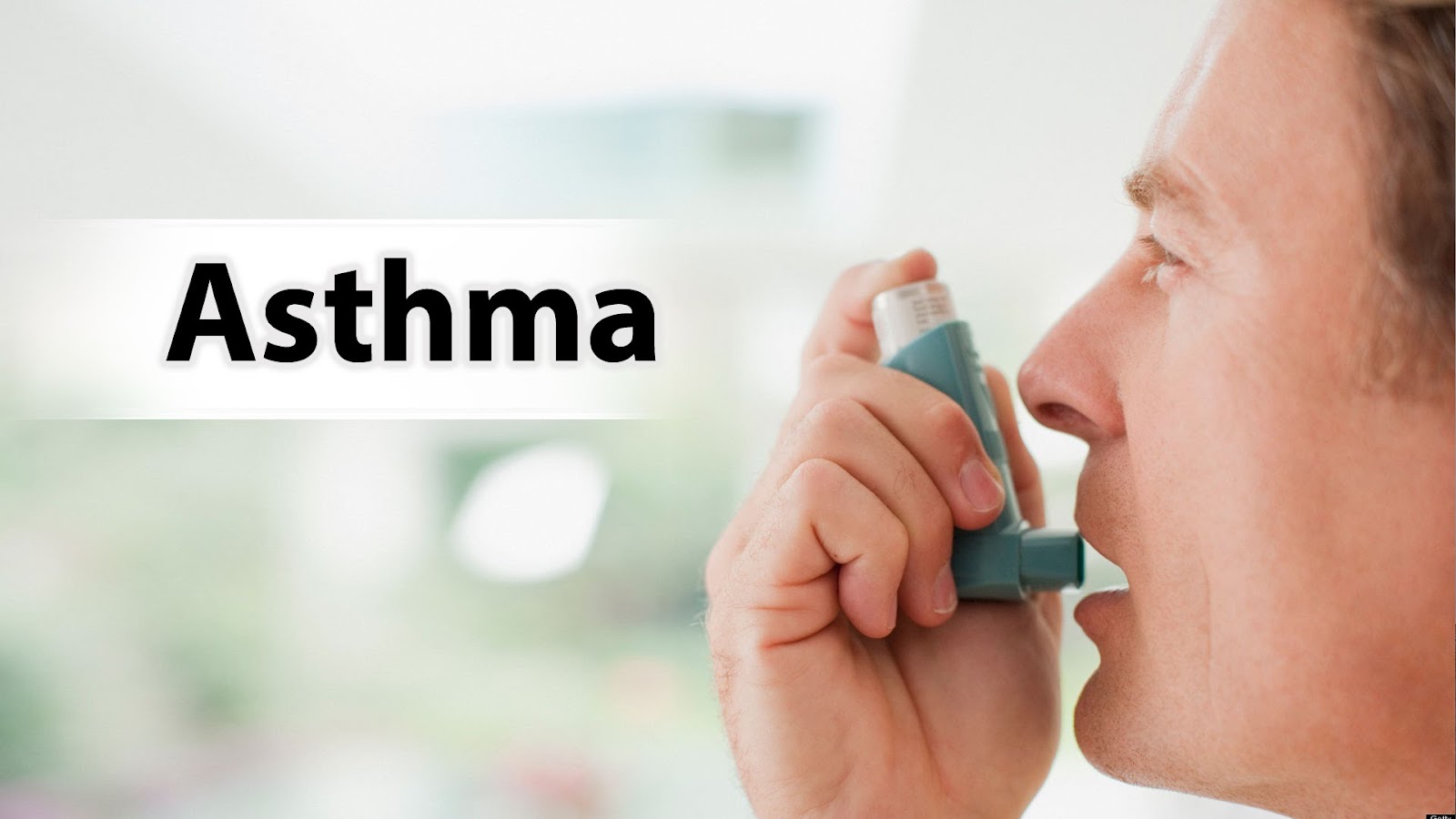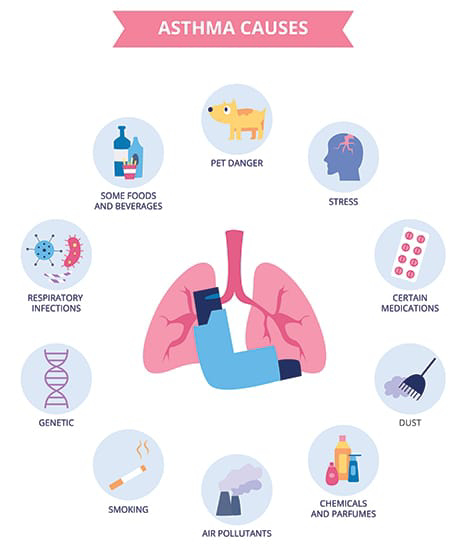Asthma: What It Is, Causes, Symptoms, and Treatment
Asthma is a condition that affects the lungs, making it hard for people to breathe properly. It can happen to anyone, but it is especially common in children. Asthma occurs when the airways (the tubes that bring air to your lungs) get swollen and narrow, causing breathing problems.
What Causes Asthma?
Asthma can be caused by different things, and not everyone has the same triggers. Here are some common factors:
1. Allergies: Things like pollen, dust mites, pet dander, or mold can trigger asthma attacks. These are called allergens.
2. Air Pollution: Breathing in polluted air or smoke (like from cigarettes or factories) can irritate the airways.
3. Exercise: Some people get asthma attacks when they exercise or do physical activities.
4. Weather: Cold air or sudden weather changes can trigger asthma for some people.
5. Infections: Colds, the flu, or other respiratory infections can worsen asthma symptoms.
Symptoms of Asthma
People with asthma can have different symptoms. These may come and go, and they might get worse at night or after being around a trigger. Some common symptoms are:
Coughing: You might have a persistent cough, especially at night or early in the morning.
Wheezing: This is a whistling sound when you breathe out.
Shortness of Breath: It feels like you can’t get enough air.
Chest Tightness: Your chest may feel tight or like something is squeezing it.
These symptoms can be mild or severe. In severe cases, an asthma attack can be life-threatening because it makes it very hard to breathe.
How to control Asthma?
Unfortunately, there’s no cure for asthma, but the good news is that it can be managed. Here’s how you can control asthma and reduce its impact on your life:
1. Avoid Triggers:
Find out what triggers your asthma and avoid them as much as possible. For example, if pollen makes it worse, try staying indoors on high-pollen days.
2. Take Medication:
Doctors usually prescribe two types of medicines:
Long-term control medicines: These help prevent asthma attacks.
Quick-relief inhalers: These are used during an asthma attack to open up the airways quickly.
3. Stay Healthy:
Getting regular exercise, eating a balanced diet, and avoiding colds can help keep asthma under control.
4. Monitor Symptoms:
Keep track of your symptoms, so you know when your asthma is getting worse. This can help you take action before an asthma attack happens.
5. Work with a Doctor:
Your doctor can create an asthma action plan for you. This plan tells you what to do if your symptoms get worse and how to manage them daily.
Conclusion
Asthma is a common lung diseasethat can be serious if not treated, but with the right care, people with asthma can live a healthy and active life. By avoiding triggers, taking medicines as prescribed, and following a doctor’s plan, asthma can be controlled, and the symptoms reduced.



